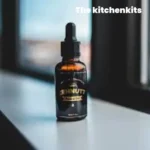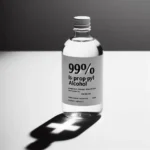Table of Contents
Can You Use Microwave Without Mica Sheet
Generally, It is not recommended to use a microwave without the mica sheet. The microwave oven is a common household appliance found in millions of kitchens worldwide.
At the heart of the microwave is the waveguide, a metal box that directs microwave energy from the magnetron into the oven cavity to heat food. The opening to the waveguide called the waveguide cover, is often covered by a removable mica sheet. This translucent sheet serves an important purpose – but can you use your microwave if it’s missing or damaged?
What is the Waveguide Cover Made Of?
The waveguide cover, sometimes called the mica cover or microwave waveguide cover, is typically a thin sheet of mica, a naturally occurring silicate mineral. Mica has unique properties that make it ideal for use in microwave ovens:
- It effectively blocks microwave radiation from escaping the oven.
- It withstands high temperatures.
- It doesn’t conduct electricity.
- It’s resistant to corrosion.
In some ovens, the cover may be made of plastic, cardboard, or a Silver-plated metal instead of mica. But mica is the most common.
The Purpose of the Mica Sheet in Microwaves
The main functions of the mica sheet in your microwave oven are:
- To prevent food splatters and grease particles from getting into the waveguide.
- To block moisture from entering the waveguide.
- To reflect microwave energy back into the oven cavity.
Without the mica cover in place, the efficiency of your microwave can be reduced over time. Bits of food and moisture absorption in the waveguide can interfere with optimal microwave distribution.
Is it Safe to Use a Microwave Without the Mica Sheet?
It’s generally not recommended to use your microwave oven without the proper waveguide cover in place. There are a few risks:
- Microwave radiation can leak out from gaps in the uncovered waveguide. This could potentially harm anyone near the operating oven.
- Food particles and moisture can get into the waveguide, causing problems like arcing, sparking or rust over time.
- Efficiency will be reduced since microwaves aren’t contained in the oven cavity as effectively. Food may cook unevenly.
Many microwave manufacturers state in their manuals that operation without the cover is strongly discouraged and could void the warranty.
Troubleshooting Issues With a Damaged or Missing Cover
If you notice any of the following, it likely means the mica sheet in your microwave needs replacement:
- The microwave is sparking inside when running.
- The mica cover is visibly damaged, cracked, or loose.
- You’re seeing rust, moisture, or food stains inside the waveguide.
- Microwaved food takes longer to cook or is heated unevenly.
Any sign of problems with your waveguide cover means it should be replaced. Contact the manufacturer about ordering a new one, making sure to have the microwave model information ready.
Can a Microwave Run Safely With a Different Cover?
If the original mica sheet is unavailable, it is possible to fashion a temporary cover for the waveguide:
- A rigid sheet of cardboard or plastic about the same size as the original mica can be used. Make sure it completely covers the opening.
- For short-term use, a sheet of aluminum foil can cover the waveguide. But foil can quickly deteriorate or cause issues.
- Never use a metal plate that is not specifically designed for microwave use. This poses a fire and safety risk.
Ideally, an appropriately sized mica sheet ordered from the appliance manufacturer is safest. But in a pinch, a stopgap cardboard or plastic cover can work. Avoid microwaving anything with a loosely fitted or makeshift cover.
Steps to Replace the Mica Sheet
Replacing a worn or damaged microwave waveguide cover is usually a straightforward process:
- Unplug the microwave oven and open the door.
- Locate the removable mica sheet on the inside wall or ceiling of the oven.
- Carefully remove the old mica cover. It may be held in place with screws or adhesive.
- Check that the waveguide cavity behind it is clean and free of debris.
- Place the new mica sheet over the waveguide opening. Secure it using the method specified by the manufacturer (screws, adhesive, etc)
- Make sure the new cover is mounted flush and securely. It should be tight to the oven surface with no gaps.
- Plug in and run the microwave to verify normal, even cooking. Monitor it closely for the first few uses to ensure no sparking or leakage.
With a properly installed microwave waveguide cover, your oven can run safely and efficiently for years to come. Handle mica sheets carefully, as they can easily crack or tear. Never operate the oven without an intact, appropriately sized cover in place.
FAQ
Can you use a microwave without a mica sheet?
No, it is not recommended to use a microwave without a mica sheet.
What is a mica sheet in a microwave oven?
A mica sheet in a microwave oven is a thin piece of insulating material called mica that is placed inside the oven to cover the aperture where microwaves enter the oven cavity.
Can I use a piece of cardboard as a replacement for the mica sheet?
No, it is not safe to use a piece of cardboard as a replacement for the mica sheet. The mica sheet is specifically designed to withstand the heat and microwaves generated by the microwave oven.
What happens if the waveguide cover is damaged?
If the waveguide cover is damaged, it can lead to the accumulation of food particles and moisture inside the microwave, causing sparking or even fire hazards. It is important to replace the waveguide cover if it is damaged.
Can I use a microwave without the waveguide cover?
It is not recommended to use a microwave without the waveguide cover. The waveguide cover is designed to protect the waveguide, which is responsible for directing the microwaves into the oven cavity. Using the microwave without the cover can result in damage to the waveguide and other internal components.
Can I use a silver piece instead of the mica sheet?
No, a silver piece or any other material is not a suitable replacement for the mica sheet. The mica sheet has unique properties that allow it to withstand the heat and microwaves produced by the microwave oven.
Is it safe to use a microwave if the waveguide cover is damaged?
If the waveguide cover is damaged but the waveguide itself is not, it is generally still safe to use the microwave. However, it is recommended to replace the damaged cover as soon as possible to prevent any further issues or potential hazards.
Are all microwaves equipped with a mica sheet?
Yes, most microwaves, including popular brands like Panasonic and GE, are equipped with a mica sheet. The mica sheet is an essential component for the proper functioning of the microwave oven.
How can I tell if the waveguide cover is damaged?
You can visually inspect the waveguide cover for any signs of damage, such as cracks, burns, or discoloration. Additionally, if you notice sparks or unusual noises coming from inside the microwave while it is in use, it may indicate a damaged waveguide cover.
Can a microwave work without the waveguide cover?
A microwave may still work without the waveguide cover, but it is not recommended to operate the microwave without it. The waveguide cover plays a crucial role in directing the microwaves into the oven cavity and protecting the internal components from food particles and moisture.
Conclusion
The waveguide cover in your microwave oven, usually made of mica, serves important purposes like protecting internal components, blocking radiation, and reflecting energy. Operating the oven without the cover risks moisture and food particle damage over time. It’s best to replace a faulty mica sheet promptly. Ensure any replacement is properly sized for your appliance.
With the right precautions, a microwave can be used safely for years even with very minor waveguide cover damage. But never run it for more than brief testing without a fully intact cover in place.

I’m Ian Welkins, a seasoned professional in the kitchen industry. My passion now drives me to provide invaluable insights into the world of top-notch kitchen products. With years of hands-on experience, I’m your go-to source for culinary excellence.











